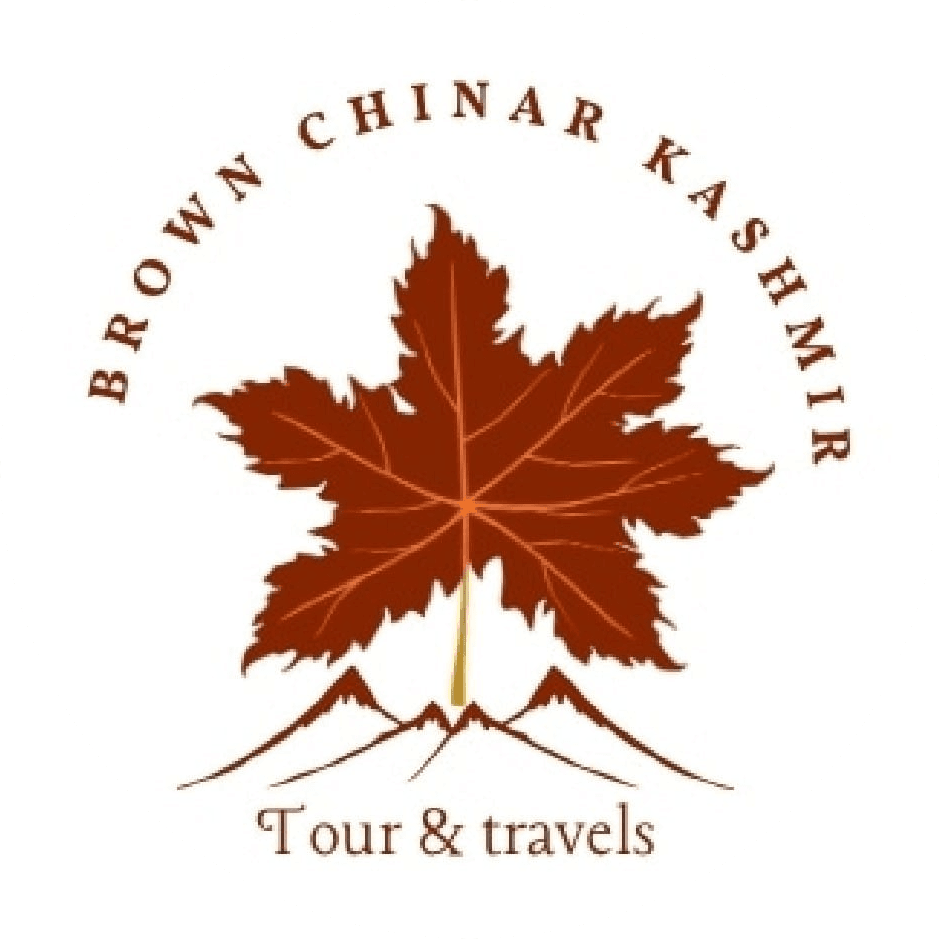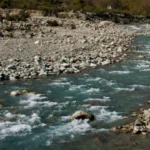Table of Contents
Toggle- Overview
- Where Is Tulail Valley and How to Reach It
- Best Time to Visit Tulail Valley
- Natural Highlights and Scenic Attractions
- Trekking and Adventure Activities
- Accommodation and Camp Options
- Culinary Delights of Tulail Valley
- Responsible Tourism and Conservation
- Practical Advice for Visitors
- Typical 3-Day Itinerary
- Photography and Videography Tips
- Conclusion
- How to book Kashmir tour online?
- People Also Ask
- What is Tulail Valley in Kashmir?
- Where is Tulail Valley located?
- How do I reach Tulail Valley Kashmir?
- What is the best time to visit Tulail Valley?
- Do I need any permits to visit Tulail Valley?
- Is Tulail Valley safe for solo travelers?
- What trekking routes are available in Tulail Valley?
- Can I camp in Tulail Valley?
- What wildlife can I encounter in Tulail Valley?
- Are there homestay options in Tulail Valley?
- What cuisines are popular in Tulail Valley?
- How many days are ideal for a Tulail Valley trip?
- Is mobile network available in Tulail Valley?
- What are the accommodation charges in Tulail Valley?
- Can beginners trek in Tulail Valley?
- Are there any medical facilities in Tulail Valley?
- What should I pack for a Tulail Valley trip?
- Is drinking water safe in Tulail Valley?
- Can I go river rafting in Tulail Valley?
- What cultural experiences await in Tulail Valley?
- Are pets allowed in Tulail Valley?
- How do I protect the environment while visiting Tulail Valley?
- What photography opportunities does Tulail Valley offer?
- Can I fish in Tulail Valley’s rivers?
- How do I book a guided tour to Tulail Valley?
- Inquiry Form
Overview
Hidden away in the remote northern corner of Indian-occupied Kashmir, Tulail Valley is an unspoiled piece of alpine grasslands, rocky ridges, and the gentle song of the Kishanganga River. Overlooked by the better-known tourist destinations of Gulmarg and Pahalgam, this hidden gem provides tourists with an individual experience of Kashmir’s unspoiled natural beauty. As one of the most compelling offbeat destinations in Kashmir, Tulail Valley captivates with its emerald pastures, untamed wildlife, and the sense that you’ve stumbled into a secret world beyond the beaten path.



Where Is Tulail Valley and How to Reach It
Tulail Valley lies within the Bandipora district, beyond the Gurez Valley’s Dawar village. Access begins from Srinagar—approximately 140 kilometers away—via Bandipora and the Razdan Pass at 11,500 feet. The route to Tulail Valley is a thrilling ribbon of tarmac snaking through precipitous gorges with scenery full of stunning vistas of snow-capped peaks that beckon adventure seekers. In summer, an alternative trekking route from Aru (close to Pahalgam) through the Nagwan Pass opens up, turning the trip into one of Kashmir’s most picturesque trekking routes. But during winter, the valley remains buried under heavy snowfall that shuts down all motorable entry points, turning Tulail Valley into a true winter wonderland in Kashmir accessible only to experienced mountaineers.
Best Time to Visit Tulail Valley
The best time to visit Tulail Valley is mid-June to late September. During these months, the valley is covered with wildflowers—blue poppies, daisies, and pink primula meadows—against the background of remaining snow fields. The clear blue skies and warm temperatures ranging from 10 °C to 25 °C make it perfect for day treks, river camps, and photography. Skiers from around the globe flock in by October to carve up fresh tracks in virgin snows, turning this Kashmir secret gem into a powder hound paradise. Post-October, plummeting temperatures and treacherous road conditions render travel impossible.
Natural Highlights and Scenic Attractions
River Kishanganga and Lakes
The valley’s lifeline, the River Kishanganga (or Neelum in Pakistan), flows through the country, its blue waters biting deep gorges and sustaining lush high-altitude wetlands. Its banks feature far-flung alpine lakes—smaller cousins of the renowned Wular Lake—where snowmelt collects to form crystal clear mirrors of towering peaks. These faraway watersides make for unparalled peace for lake camping in Kashmir.
Pine Forests and Alpine Meadows
Rises of 2,500 m to 3,500 m harbor dense deodar and pine forests that grade into extensive meadows scattered with wildflowers. Arakul Meadows, often described as the “mini Switzerland of Kashmir,” is paradise for photographers, with green rolling hills topped by the Pir Panjal range.
Mountain Passes and Panoramic Vistas
The Nagwan Pass trek to over 4,200 m is the most exciting scenic trekking route in Kashmir, offering majestic views of the Great Himalayan range. At its top, the Harmukh and Machoi peaks stretch out before trekking eyes, their snowfields reflecting the color of sea icebergs against a radiant blue sky.
Trekking and Adventure Activities
Gurez Valley to Tulail Tread: A moderate trek of 25 km that winds through shepherd camps and juniper shrubs. Along this classic Gurez Valley trek, you’ll pass traditional shepherd huts and encounter the nomadic Gujjars during their summer migration.
Nagwan Pass Trek: For more adventurous trekkers, the 3- to 4-day Aru to Tulail trek through Nagwan Pass is an endurance test. The trek entails moraine terrain, high-altitude lakes, and unpredictable weather, with good acclimatization and gear required.
River Rafting and Fishing: Soft rapids of the river between Dawar and Tulail are suitable for beginner rafters, while its crystal-clear water teems with trout—ideal for catch-and-release fishing amidst pristine landscape.
Accommodation and Camp Options
Given its remoteness, Tulail Valley’s accommodation is charmingly relaxed:
- Local Homestays: In Dawar village, friendly Kashmiri families offer simple rooms and hearty homestay meals—perfect for experiencing the local culture.
- Eco-Friendly Campsites: Some operators organize canvas tents on elevated meadows with river views, with shared washrooms and campfire amenities.
- Riverside Camping: For those who want to experience absolute solitude, camping in your own tent on the banks of the Kishanganga under starry skies makes memories that surpass any luxury resort.
Experiencing Local Culture
Tulail Valley is populated by the Dardic people of Shina origin, whose age-old pastoral economy has not differed much across the centuries. Tulail is summer grazing land to Gujjar and Bakarwal nomads, who settle here for summers with temporary habitat. To sit with these communities gives an impression of centuries-ancient habits—homely handicraft like woolen hat and pashmina shawls manufactured with local wool and pashmina, old rural songs filling evening air at sunsets, and tea intervals around noon with midday chai followed by fried bread.
Culinary Delights of Tulail Valley
Although lacking five-star restaurants, Tulail Valley pleases with sumptuous Kashmiri cuisine prepared in homestays and small roadside dhabas:
- Masale Tsot (Chickpea Curry): A protein-rich dessert served with local flatbread.
- Gustaba and Rista: Melt-in-the-mouth meatballs prepared in saffron-flavored gravy—regional delicacies adapted even in remote kitchens.
- Local Trout: Freshly fished from Kishanganga, grilled or fried in mustard oil, offering a real mountain dining experience.
Responsible Tourism and Conservation
As tourism creeps into these pristine landscapes, responsible travel is the ticket. Bring reusable water bottles to cut down on plastic use, don’t disturb wildlife, and adhere to Leave No Trace strictly—packing out all garbage and never having campfires outside of designated campfire zones. Utilizing local guides and homestays not only enriches your experience but also ensures that tourism dollars directly support the valley’s residents, and help preserve this Kashmir gem.
Practical Advice for Visitors
Permits and Permissions: No inner-line permits are required for Indian citizens, but foreign visitors must get an Inner Line Permit from the DC office in Srinagar.
Health and Altitude: Tulail’s high altitude can lead to mild altitude sickness; acclimatize gradually, drink lots of water, and consult a doctor if symptoms persist.
Packing List: Layered clothing, decent trekking shoes, sunscreen, quality headlamp, and a minor first-aid kit. During summer months, temperatures drop to single digits at night, so carry a warm jacket.
Connectivity: Occasional mobile signals; BSNL works best, but be prepared for offline navigation on GPS maps or a local guide.
Typical 3-Day Itinerary
Day 1: Srinagar to Dawar
- Early morning drive through Razdan Pass, with photo stops at 12,000 ft.
- Night stroll to local homestay, host family interaction.
Day 2: Arakul Meadows Trek
- Morning trek on the Kishanganga River for 12 km.
- Overnight camp with stargazing and bonfire.
Day 3: Nagwan Pass Expedition & Back
- Optional sun-rise trek to local ridge for views.
- Drive back to Srinagar, unwinding with a shikara ride on Dal Lake (if time permits).
Photography and Videography Tips
Tulail Valley’s virgin beauty demands timing and expertise:
- Golden Hour Magic: Sunset and sunrise warm light falls upon the snowfields and meadows, ideal for wide-angle landscapes.
- Long Exposure River Shots: Use ND filters to blur river flow, creating mystical effects along rocky cliffs.
- Macro Wildflower Photography: Using a macro lens, reveal the tiny details of endemic flowers like the Himalayan blue poppy.
- Drone Footage: If permitted, aerial shots of green meadows stretched out against the curvaceous river offer cinematographic shots seldom seen on other Kashmir tourism websites.
Conclusion
Tulail Valley is not just a place; it’s a testament to Kashmir’s abiding allure, a place where nature reigns supreme and culture thrives in harmony with the landscape. As you set out on your journey to this far-flung paradise, rest assured that each road you travel, each local myth you uncover, and each dawn you witness in Tulail Valley is a chapter in a travel adventure unlike any other. Take the trip, tread lightly, and let the valley’s serene grandeur seep into your soul.
How to book Kashmir tour online?
Contact Brown Chinar at +91 6005039532/+91 9906188874 or Email us at : Enquiry@brownchinarkashmir.com
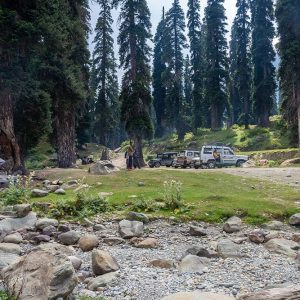

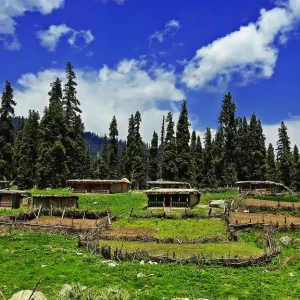

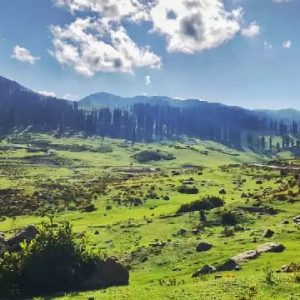
People Also Ask
What is Tulail Valley in Kashmir?
Tulail Valley is a secluded alpine haven in Indian-administered Kashmir, famed for its emerald meadows, dense pine forests, and the meandering Kishanganga River. As one of the most pristine offbeat destinations in Kashmir, it offers travelers a glimpse into untouched natural beauty and traditional Dardic culture.
Where is Tulail Valley located?
Nestled within Bandipora district, Tulail Valley lies beyond Gurez’s Dawar village, approximately 140 km north of Srinagar. The valley sits at elevations between 2,500 m and 3,500 m, accessible via the Razdan Pass in summer months.
How do I reach Tulail Valley Kashmir?
The most common route to Tulail Valley is by road from Srinagar via Bandipora and Razdan Pass. During summer, an adventurous trekking route from Aru (near Pahalgam) over the Nagwan Pass also connects to Tulail Valley.
What is the best time to visit Tulail Valley?
The ideal window is mid-June to late September, when wildflowers carpet the meadows and days are comfortably warm (10 °C–25 °C). October brings fresh snowfall, attracting winter sports enthusiasts.
Do I need any permits to visit Tulail Valley?
Indian nationals require no Inner Line Permit, but foreign visitors must obtain an Inner Line Permit from the Deputy Commissioner’s office in Srinagar before traveling to Tulail Valley.
Is Tulail Valley safe for solo travelers?
Yes—Tulail Valley is generally safe for solo adventurers. However, due to limited connectivity and challenging terrain, traveling with a local guide is recommended for navigation and cultural insights.
What trekking routes are available in Tulail Valley?
Popular treks include the moderate 25 km Gurez-to-Tulail trail, and the more demanding 3–4 day Nagwan Pass expedition from Aru, both showcasing Kashmir’s most scenic trekking routes.
Can I camp in Tulail Valley?
Absolutely—Tulail Valley offers eco-friendly riverside and meadow campsites. Carrying your own gear or booking with local operators ensures an immersive wilderness experience.
What wildlife can I encounter in Tulail Valley?
Wildlife enthusiasts may spot Himalayan marmots, snow leopards (rarely), Himalayan black bears, and colorful birds like the Himalayan monal amid the valley’s rich biodiversity.
Are there homestay options in Tulail Valley?
Yes—Dawar village hosts several family-run homestays, offering comfortable rooms, authentic Kashmiri meals, and cultural immersion with Shina-speaking hosts.
What cuisines are popular in Tulail Valley?
Local delights include tsot (chickpea curry), trout grilled in mustard oil, and Kashmiri specialties like gustaba and rista, often served with traditional noon chai.
How many days are ideal for a Tulail Valley trip?
A 3–4 day itinerary covers Srinagar–Dawar drive, Arakul Meadows trek, Nagwan Pass exploration, and return, plus optional Dal Lake extension for a complete Kashmir experience.
Is mobile network available in Tulail Valley?
Connectivity is sporadic; BSNL generally works best. Travelers should download offline maps or hire a local guide for navigation.
What are the accommodation charges in Tulail Valley?
Homestays range from ₹800 to ₹1,500 per night (inclusive of meals), while camping packages, including tents and guided services, start around ₹1,200 per person per night.
Can beginners trek in Tulail Valley?
Yes—the Gurez-to-Tulail 25 km trek is beginner-friendly, with gradual altitude gain, while the Nagwan Pass requires prior high-altitude trekking experience.
Are there any medical facilities in Tulail Valley?
Basic first-aid is available in Dawar village. For serious medical needs, travelers should plan evacuation to Bandipora or Srinagar, where hospitals and clinics are better equipped.
What should I pack for a Tulail Valley trip?
Essentials include layered clothing, sturdy trekking boots, sunscreen, a warm jacket, headlamp, reusable water bottle, and a compact first-aid kit to tackle altitude and weather shifts.
Is drinking water safe in Tulail Valley?
Spring water and river-fed sources are generally pure, but it’s advisable to carry a water purifier or filtration tablets for safe drinking water throughout the trek.
Can I go river rafting in Tulail Valley?
Yes—the Kishanganga’s gentle rapids between Dawar and Tulail are suited for beginner-friendly rafting excursions, often organized by eco-tour operators.
What cultural experiences await in Tulail Valley?
Engage with the Dardic Shina community, witness Gujjar-Bakarwal nomadic camps, learn traditional handicrafts, and enjoy folk music and dance around evening bonfires.
Are pets allowed in Tulail Valley?
Due to wildlife conservation and limited veterinary services, traveling with pets is discouraged. If necessary, secure permits and ensure your pet’s health and safety.
How do I protect the environment while visiting Tulail Valley?
Practice Leave No Trace: carry reusable water bottles, pack out trash, use eco-friendly camping gear, and respect wildlife by observing from a distance.
What photography opportunities does Tulail Valley offer?
Capture sunrise over snow-clad peaks, long-exposure shots of the Kishanganga River, macro images of alpine wildflowers, and drone vistas (permit-dependent) of sprawling meadows.
Can I fish in Tulail Valley’s rivers?
Yes—with a valid fishing permit from local authorities, catch-and-release angling for trout in the Kishanganga River is a popular activity for fishing enthusiasts.
How do I book a guided tour to Tulail Valley?
Numerous Srinagar-based and Gurez Valley tour operators offer customizable packages—including transport, camping, trekking guides, and permits—to ensure a seamless, safe, and enriching Tulail Valley experience.
